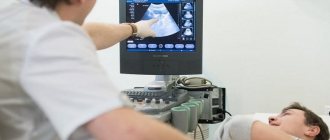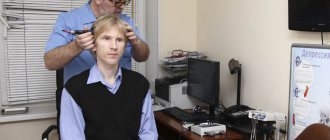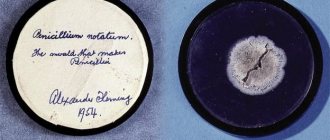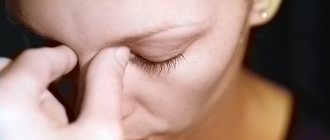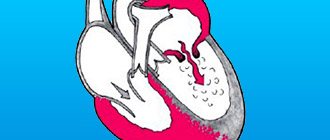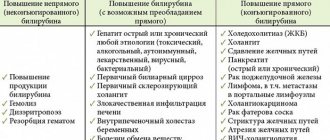Delusional disorder is a type of mental illness, otherwise known as paranoid disorder or psychosis, that is characterized by the presence of well-structured delusions.
The difference between delusional disorder and schizophrenia is the patient’s firm belief in something false, but devoid of whimsy and imagination. With this disorder, delusions of persecution, delusions of jealousy or unrequited love, dysmorphophobia, etc. may appear. Moreover, in reality, the situations experienced by the patient may be either untrue or exaggerated.
At the same time, people with delusional disorders are often socially active and adequate in areas other than the topic of delusion. However, in some cases, patients are so consumed by their obsessions that their lives are ruined.
Delusional disorder is treated at the Transfiguration clinic
Psychiatrists, neurologists and psychologists at the Transfiguration Clinic have extensive experience working with patients who have previously been diagnosed with delusional disorder. High qualifications and the use of advanced scientific developments help the clinic’s doctors accurately determine the diagnosis and select the optimal methods of treating mental illnesses. At the Transfiguration clinic you can receive decent treatment and psychological support, which is guaranteed to be received by the patients’ loved ones.
Doctors at the Transfiguration Clinic provide their clients with:
- confidentiality of treatment;
- attentive patient care;
- psychological counseling and assistance to relatives of patients;
- comprehensive modern treatment using the best drugs and therapeutic technologies;
- objective diagnosis;
- individual approach.
You can find out detailed information about the types of treatment, rehabilitation, methods of work and prices at the Transfiguration clinic on the page “Our prices”
Risk factors and groups
The exact reasons influencing the development of delusional ideas have not been identified to this day, but despite this, experts identify three main theories on which modern psychiatry relies:
- Psychological factor - the disease is provoked by unfavorable environmental conditions that cause stress.
- Genetic factor . It has been revealed that most often paranoid psychosis occurs in people whose relatives have suffered from some kind of mental disorder. Experts believe that the predisposition is passed on from parents to children.
- Biological factor . A connection has been identified between certain pathologies of certain areas of the brain and the development of delusional psychosis. Also affected is an imbalance of neurotransmitters in the brain, which perform the function of transmitting messages between nerve cells.
In addition to these factors, the risk group includes people who abuse alcohol, take drugs, are isolated from society or suffer from loneliness. It is also noted that delusional spectrum diseases are more common in old age and women are more susceptible to it than men.
Complications
Organic schizophrenia-like disorder with a long course is complicated by emotional and behavioral disorders. Depressive-dysphoric, anxiety, and ecstatic disorders dominate. The crystallization of delusions and the intensification of accompanying symptoms interfere with normal social functioning.
Patients are suspicious of others and of any changes in the situation. Behavior becomes inappropriate: rituals and physical means of protection from imaginary negative influence are developed. In some cases, delirium forms aggression and auto-aggression; patients become dangerous to themselves and others: they cause self-harm, attempt suicide, attack other people, and provoke fights.
How is it different from schizophrenia?
A distinctive feature of paranoid psychosis can be called a high degree of probability of the development in life of those situations that initially arise only in the patient’s head.
All kinds of ideas that visit a person in such a state are distinguished by the appearance of reality and are devoid of a touch of whimsy, which makes one even more believe that everything is really happening.
The main difference from schizophrenia is that people suffering from unrealistic obsessions are sociable, active, socially adequate, sociable, capable of functioning and solving any problem that differs from the theme of the dominant delusional idea. Their behavior does not always indicate the presence of psychosis, since their actions are not characterized by obvious eccentricity or any oddities.
In the case of patients with schizophrenia, confusion of emotions, loss of sensation and understanding of reality, and generally inappropriate behavior are observed. The patient hears voices, sees pictures that cannot exist in real life.
Schizophrenia requires guardianship over the patient, since in such a state the patient is most often antisocial and often poses a threat to himself and others.
Treatment options
There are two methods that can help cure delusional disorder. Treatment can be medication and psychotherapy. The first method is to use antipsychotics, which block dopamine receptors located in the brain. New drugs also affect the production of serotonin.
If a patient suffers from depression, is constantly in a state of anxiety and depression, then he is prescribed antidepressants, and in some difficult cases, tranquilizers. The second method has the following main goal: to switch the patient's attention from his false fictions to the things that are really happening.
Today, specialists prefer to use cognitive behavioral psychotherapy, with the help of which the patient is able to make changes to his irrational thoughts that cause anxiety. In severe cases of delusional disorder, the patient is admitted to a hospital to stabilize his condition.
The main therapy is carried out in accordance with the somatic disease that caused delusional phenomena. Symptomatic treatment of schizophrenia-like disorder includes approaches used for schizophrenia with delusions. To relieve delusional and hallucinatory symptoms, antipsychotic drugs (haloperidol, chlorpromazine) are used, which block brain receptors and restore an adequate perception of reality and a critical attitude towards emerging ideas. Additionally, antiemetics are prescribed.
For paroxysmal phenomena, antiepileptic drugs (carbamazepine, valproic acid) are selected. All antipsychotics help lower the anticonvulsant barrier, so patients with epilepsy require adjustment of the basic treatment. For maintenance therapy, lower dosages and simple combinations of drugs are used. In most cases, hospitalization is not required; inpatient treatment of the patient is performed within a period of 2 weeks to 2 months. If you feel better, stopping medications on your own is unacceptable, as the symptoms of the disorder return and become more pronounced.
Includes treatment of the underlying disease. The use of aminazine, carbamazepine, and depakine is effective. The last two drugs can be used for maintenance therapy, since the risk of recurrence of psychosis is quite high. The use of long-term neuroleptics for maintenance therapy is not recommended, since patients quickly develop symptoms of intoxication.
Symptoms
Unlike schizophrenia, delusional disorders are not usually accompanied by auditory hallucinations, that is, false ideas (for example, voices that do not actually exist).
Manias are disorders of thinking, that is, the patient’s belief in the existence of things, phenomena or events around him that actually do not exist. Certain events may actually take place, but the patient attaches inadequate meaning to them and builds a so-called delusional system around himself. Such false judgments of the patient cannot be corrected. The patient is deeply convinced of the truth of his delusions; he believes that his judgments are correct, and others either do not see them or rebel against him, want to “make him sick.” He believes that even those people who are trying to help him and explain that he is mistaken are mistaken themselves or are taking part in a “conspiracy against him” (for example, family, friends, work colleagues). Patients often include in this group people and institutions that can help the patient professionally: psychologists, psychiatrists and hospital staff. This is why it is often very difficult to help a person who believes that everything is fine with him, that he is healthy, and those who want to help him are his “enemies.”
Sometimes delusional disorder develops so gradually and over a long period of time that loved ones do not even notice that anything alarming is happening; they observe the patient's otherness and quirkiness, but attribute this to his personality traits.
Sometimes the area of a person’s delusions is so large that relatives and friends believe in the veracity of the events described by the patient, sympathize, advise, and try to help find a solution. Only confrontation with reality reveals to these people the imaginary nature of the facts provided by the patient.
Persistent delusional disorders most often refer to various perverted, hypochondriacal, jealous, erotic delusional states (a patient suffering from this mental disorder usually has one of these). Delusions of persecution are characterized (depending on their level of development) by the patient's belief that other people (for example, selected or all family members, people at work, neighbors), groups of people, or even entire systems of institutions want to hurt him, destroy him his. Such a person may feel that others are watching him.
Misconceptions may also include the patient's suspicions that he is being robbed (neighbors steal electricity, come to the apartment in his absence and steal his things) or want to poison him (they add poison to food, release gas into the apartment). They can also manifest themselves in the form of mania of jealousy, when a person is convinced that his partner is deceiving him, so the patient builds his life on the basis of constant checking, sometimes even spying on his partner in order to discover his betrayal. There are also erotic delusions, which manifest themselves in the fact that the patient becomes unreasonably convinced of self-love on the part of a person who is not interested in him.
The content of misconceptions may depend on the sociocultural environment in which the patient lives, his current experience, etc.
Organic disease
Organic delusional disorder manifests itself in constant or periodically appearing false beliefs that are dominant in the overall picture. Symptoms similar to schizophrenia are often observed - eccentric delusions, impaired thinking, hallucinations.
There are 2 forms of this form of violation:
- acute , occurring against the background of a traumatic brain injury or other severe disorder and characterized by sudden psychopathological symptoms;
- chronic , where the feature is a slow, irreversible course of the disease.
A distinctive feature of the organic form of the syndrome is its development due to genetic predisposition or damage to brain structures.
Types of delusions
Delusional schizophrenia-like disorder is characterized by delusions on one topic or systematic absurdity on different topics. The content of the patient's speech can be very diverse. The most common cases involve delusions of persecution, hypochondria, or grandiosity. But the patient’s fictitious beliefs may relate to problems such as jealousy, an ugly, unattractive body, a bad smell, etc. A person may feel that he smells bad, that his face inspires disgust in others. In addition, the patient may even be convinced that he is a homosexual. Other symptoms may not appear, but depressive states are possible from time to time.
Nature of the clinical picture
The main characteristic of the clinical picture of delusional disorder is the frequent severity of manifestations of delusions in the patient. At the same time, the nature of a person’s ideas is purely personal and not general.
Symptoms may also include:
- depression;
- irritation;
- anger;
- mood swings;
- hallucinations corresponding to a specific type of delusion.
In each specific case, the clinical picture will be different. It all depends on the nature of the delusion of a particular individual.
Prevention
Methods for preventing the manifestation of such disorders are currently unknown. The only important aspect of prevention is early diagnosis of the disease that provoked such symptoms.
As for preventing the manifestation of such disorders in patients with mental disorders, the following preventive measures can be provided to them:
- Performing light exercise.
- Listening to relaxing music.
- Drink enough fluids to prevent dehydration.
What is the patient experiencing?
A person who suffers from delusional (paranoid) disorder often tells made-up stories that may seem true. The patient can describe situations that happen in real life. For example, a person constantly mentions persecution, believes in his exceptional importance, suspects his husband/wife of infidelity, talks about someone plotting against him, etc. Basically, such beliefs are the result of a misinterpretation of the problem or perception. However, in real life, the above situations turn out to be untrue or extremely exaggerated. Delusional disorders may not interfere with a person’s life. He often continues to be active in society, functions normally and usually does not attract the attention of others due to his obviously strange and eccentric behavior. However, some cases have been recorded where patients were completely dependent on their absurd ideas and their real lives were destroyed.
Diagnostics
If a patient has obvious symptoms, a specialist will examine the patient to determine the causes of the unhealthy disorder. Delusional mental disorders cannot be diagnosed using specific laboratory tests. To rule out physical illness as the cause of symptoms, specialists mainly use research methods such as x-rays and blood tests. If there is no obvious physical cause of the disease, the patient is referred to a psychiatrist or psychologist. Doctors in the field of psychiatry use specially designed interviews, as well as assessment programs. The therapist is based on the patient’s story about his condition and symptoms of the disease. In addition, he takes into account his personal observations regarding the patient’s behavior. Next, the doctor determines whether the person has obvious symptoms of a mental disorder. If a person exhibits behavioral disturbances for more than one month, the doctor diagnoses the patient with a delusional mental disorder.
